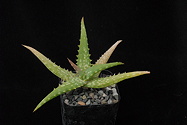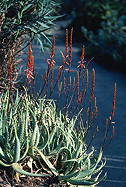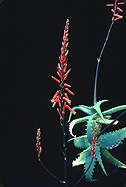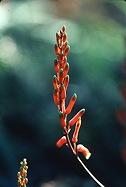This charming species is of modest proportions, making it an ideal choice for a small residential garden. Rosettes to about 20 cm offset to form small colonies. The light green leaves are speckled with fine white spots and are unusually resistant to any kind of blemishing or leaf dieback to which some species are prone. It is freely flowering with slender racemes to 40 cm of bright red-orange, glossy flowers with greenish tips, lining the upper two fifths or so of the inflorescences. Its rather exotic sounding name is derived from Tororo Rock, in SE Uganda near the Kenya border, to which the species was thought to be endemic. Thomas Cole and Tom Forrest mention a few other nearby populations in their recently published field guide, Aloes of Uganda (2017). Additional collections have entered cultivation in recent years, but for most of the half century since its description in 1953, only a single clone (Bally & Reynolds 6594) has been available. This is the type collection made by P. R. O. Bally in 1952 from the NE summit of Tororo Rock. Despite the proximity of this location to the equator, the plants grow above 1300 m which seems to impart a surprising degree of frost hardiness. Though the species can be propagated from offsets, we have foreshortened the process via tissue culture. HBG 24565 (UCBG 65.1558), $10.
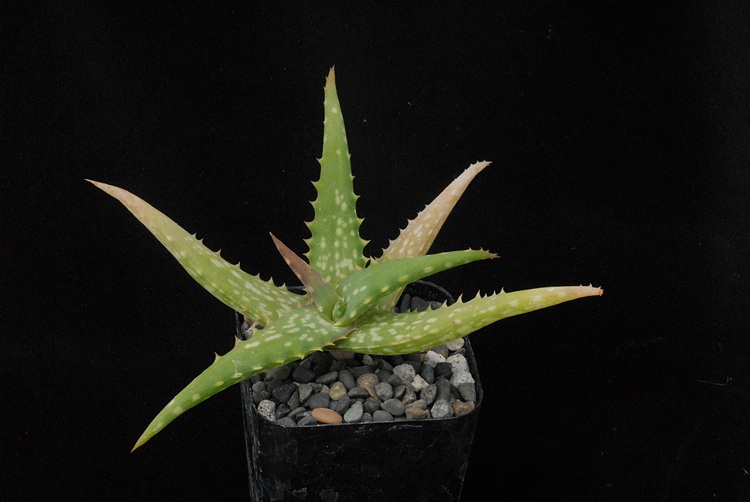
Published in the Cactus and Succulent Journal, Vol. 90 (2), Summer 2018
